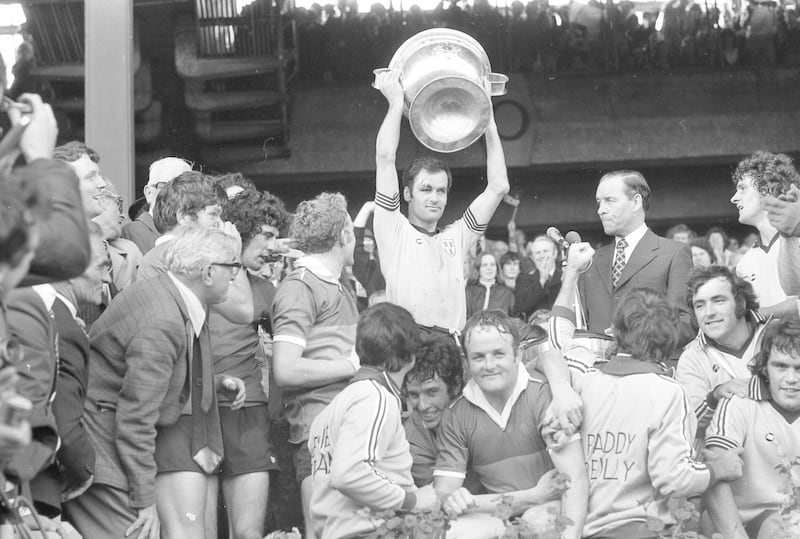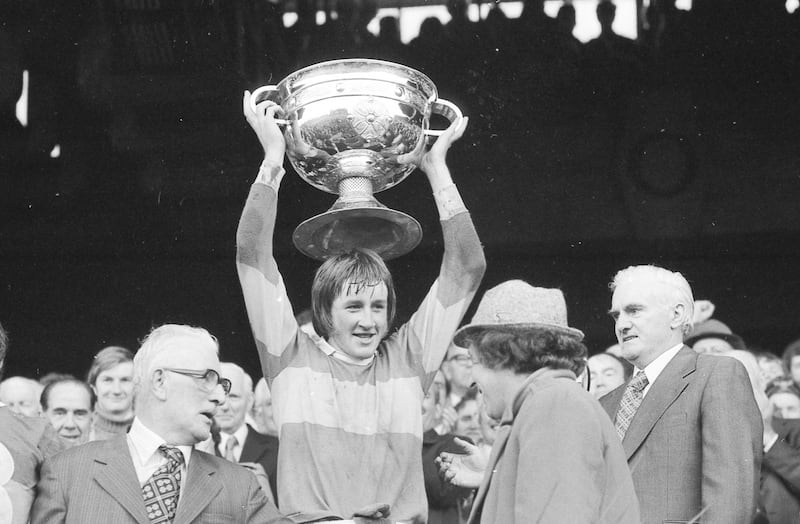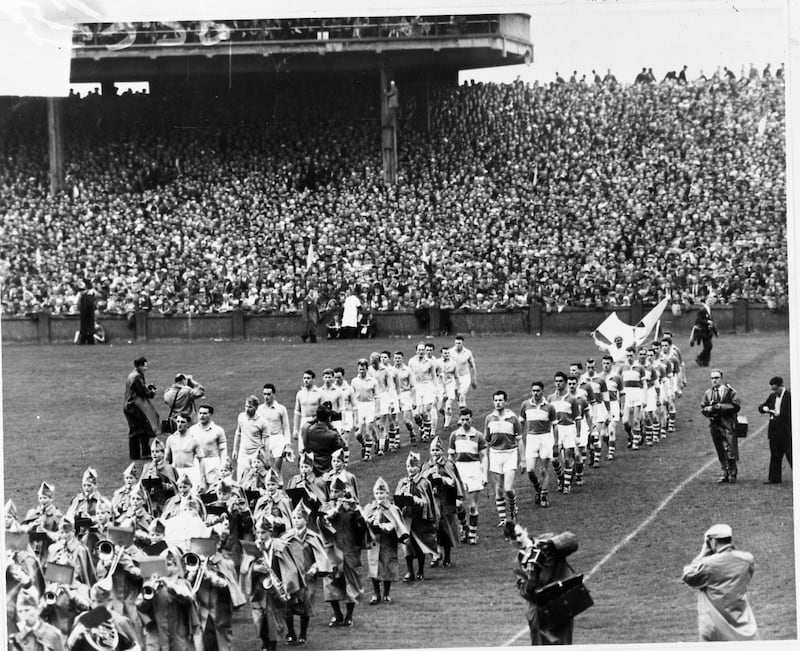At the launch of Chasing Sam Maguire: The All-Ireland football championship 1928-1977, publisher Ivan O’Brien said that the book had more characters than nearly any other title published by The O’Brien Press. He wasn’t referring to footballers with a trove of anecdotes and one-liners but actual marks on the page – “an inscribed symbol or graphic symbol” to give the dictionary definition.
He later clarified that with 1.2 million characters and about 200,000 words, the book was second only to the company’s edition of Ulysses with 270,000 words and 1.5 million characters. It also comes with an index (not always a feature of sports books) running to 29 pages.
How did a volume on football history manage to generate so much detail?
Authors Colm Keys, the Irish Independent’s GAA correspondent, and Dermot Reilly, retired PwC partner, GAA historian and a Kildare enthusiast – at the launch he said that he had always dreamed of wearing a white shirt in Croke Park and making a speech – had the idea when looking into the apparently simple matter of what clubs All-Ireland finalists played for.
They assumed there would be a database with the information somewhere in the GAA but you can never make those assumptions.

The association was for a long time notoriously laissez-faire about its history. What All-Ireland footage exists from before the 1940s came because British newsreel companies dispatched units to Dublin to film the big days, complete with chuckling, patronising soundtracks.
Eventually Gael Linn took on the filming of All-Irelands – giving rise to two fascinating DVDs, issued by the Irish Film Institute about 10 years ago – but recordings up until then are not by any means comprehensive.
Keys and Reilly determined to set about excavating this information but without a central source it became a laborious process.
The scale of the task pretty quickly convinced them that they needed to break the Sam Maguire story into two volumes: one from 1928, the first year that the trophy was presented and by coincidence the last of the four titles won by Kildare; the other from 1978, potentially to the Sam Maguire centenary in five years’ time.
It pretty quickly became apparent that national media wasn’t as reliable as local newspapers so the archive chase had to spread around the counties. There was help in the presence of so many local historians to advise and direct. One of the biggest issues was the peripatetic nature of so many in the decades in question.

Careers like the Garda or teaching frequently meant relocation and before road networks opened up the country, it wasn’t always possible for intercounty players to continue turning out for their home clubs. It was also common in those days to be able to represent two clubs if your home side was graded junior and you wanted a crack at the senior county championship.
The research is exhaustive but the authors accept that it is not necessarily definitive.
The example is cited of Garda Paul Russell, a prominent player in Kerry’s first four-in-a-row, who is estimated to have played with up to eight clubs, as he was stationed all around the country. Firm evidence backs up six of those, which are detailed in brackets beside Russell’s name.
With the best will in the world, this work would not sell a book on its own but each year features an account of that season’s championship. Sports reporting in those days was very much concerned with the outcome, scores and scorers, rather than the process, tactics and context.
The authors break up the factual detail with observations from contemporary reports. Topically, at the 1949 Munster semi-final, a referee gets attacked. On the field, Donie O’Donovan, who would coach Cork to the 1973 All-Ireland, scores three goals and the Irish Independent takes a brusque view of the post-match violence.

“Though he received a number of kicks, Mr Sullivan was, fortunately, not seriously injured.”
There is also an accompanying miscellany for each final. For instance, 1970 threw up an unusual problem. A football disappeared into the crowd for the first time that anyone could remember. This and the loss of 22 sliotars during the hurling final persuaded the GAA to erect the now familiar netting behind goals.
Finals are put in context with news and social details included for each year. There is the haunting shadow of emigration, which ransacked Ireland’s population for much of the period covered by the book.
One of the more sobering revelations is that in 1947, the year of the famous Polo Grounds final in New York between Kerry and Cavan, a Gaelic League meeting in Dublin was told that of the 30,000 who emigrated from Ireland in 1946, 20,000 were girls, most of whom, 14,000, were under the age of 15.
The book is a monumental exercise – putting significant amounts of work into the uncovering of information that by rights should have already been established. All GAA and football enthusiasts are in the debt of Keys and Reilly for producing a ground-breaking account of the early evolution of the competition for Ireland’s most famous sporting trophy.


















